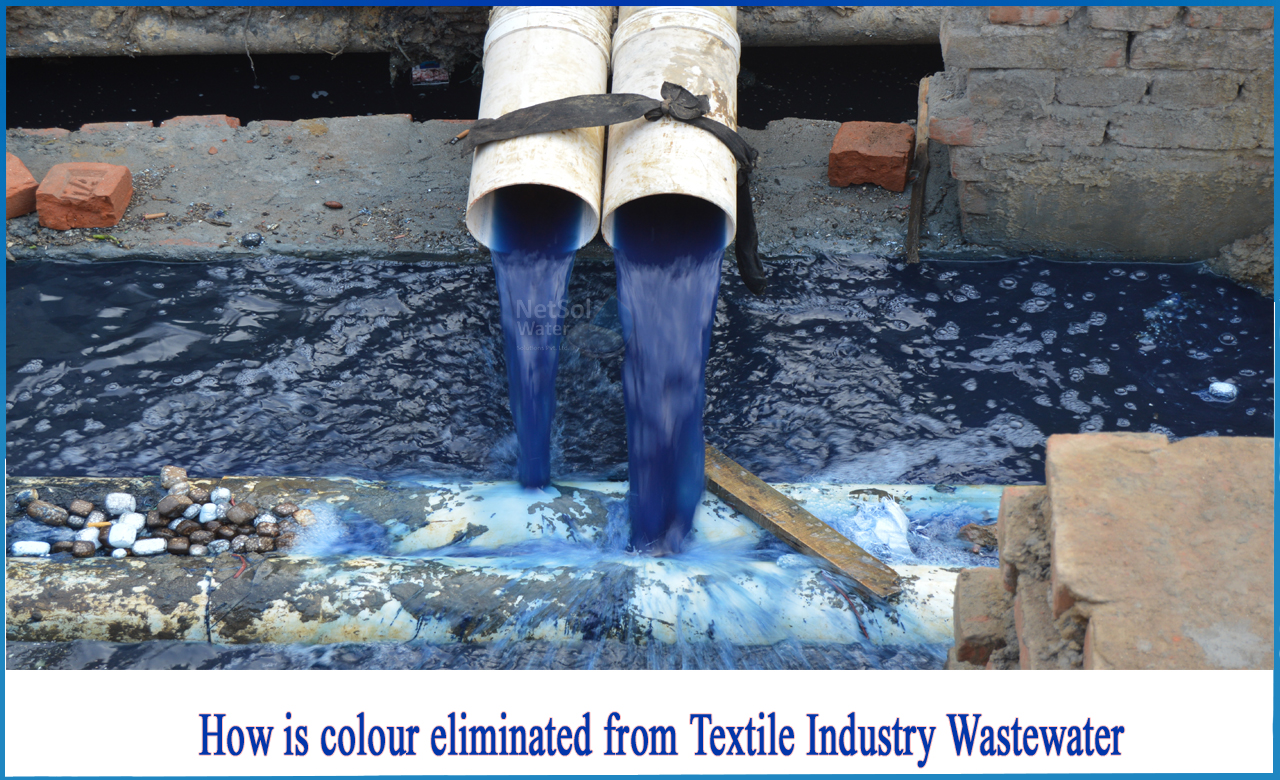How is colour eliminated from Textile industry wastewater?
The textile business is distinguished by the fact that its operations necessitate a large consumption of water, electricity, and auxiliary chemical products. This results in a vast volume of effluent with high quantities of colours, biodegradable and refractory organic contaminants, suspended debris, surfactants, salts, and chlorinated chemicals. Furthermore, because production is intermittent in the vast majority of situations, there is significant unpredictability in the volume of wastewater generated and the nature of its contamination. Because of these features, it is a difficult-to-treat industrial effluent from textile industry.
Colour elimination from Textile industry wastewater
Historically, many procedures based on physical-chemical treatments have been used to remove colour from textile effluent. However, depending on the sort of dye to be eliminated, there are various options that are making progress.
The following approaches may be used to treat the colour in wastewater, depending on the circumstances:
1: Coagulation-flocculation: This method is based on the addition of polyelectrolytes or inorganic flocculants (iron or aluminium salts) that form flocs with the dye molecules, allowing them to be eliminated through settling. The removal efficacies are high;However, slurry is formed throughout the process that must be handled. The best results are obtained when an excessive amount of coagulant is used, albeit this may raise the concentration of the pollutant in the effluent.
2: Ozonization: The dye molecules are destroyed due to ozone's high oxidation capacity. The oxidation reaction is fast, high flows may be treated, waste and slurry are not produced, and a colourless effluent with a low COD is achieved.Nonetheless, the toxicity of the effluent must be checked, as the chemicals created in some situations are more poisonous than the primary dyes. Another notable disadvantage of ozonization is the short half-life of ozone, which is approximately 20 minutes. It has a substantial impact on the cost of the procedure.
It has been discovered that supplementing ozone generation with hydrogen peroxide results in a significant boost in both speed and elimination yield.
3: Membrane technology: This allows for the successful separation of dye molecules and other chemicals larger than the pore size of the chosen membrane. The most common membranes utilized are reverse osmosis and nano-filtration. With this process, enormous amounts of effluent can be treated continuously and with a high level of separation. The effluent is of high quality and may usually be reused. The main drawbacks of these procedures include the creation of wastewater with a high concentration of contaminants, as well as the difficulty and cost of renewing the membrane.
4: Adsorption:It is the physical retention of dye molecules on the surface of the adsorbent employed. A multitude of characteristics influence the adsorption process's efficacy, including the interaction between the dye and the adsorbent, its specific surface, the size of the dye molecule, the temperature, the pH, and the contact time. As a result, the type of adsorbent chosen is critical. Activated carbon is a common adsorbent, but other inorganic adsorbents are also utilized.
5: Electrochemical techniques: These are based on the hydrolysis of the dye via secondary agents created electrolytically by applying a voltage. The procedures are clean, work at a low temperature, and in many circumstances, do not require the addition of chemical compounds to the effluent. Nonetheless, the procedure's high energy consumption and the formation of secondary chemicals as a result of parallel reactions limit its potential.
Conclusion
The regulatory restrictions, as well as the need to save energy and reuse water in industry, need the development of new methods that will allow us to eliminate water pollution and incorporate wastewater back into the manufacturing process.
What do we offer?
Netsol Water is a renowned producer of water and wastewater treatment plants. We have a reputation for being the top commercial RO plant manufacturer, industrial RO plant manufacturer, sewage treatment plant manufacturer, effluent treatment plant manufacturer, and much more. Aside from that, our USP is 24x7 customer assistance.
For further inquiry, or product-purchase-related questions, give us a call on +91-9650608473 or email at enquiry@netsolwater.com.



